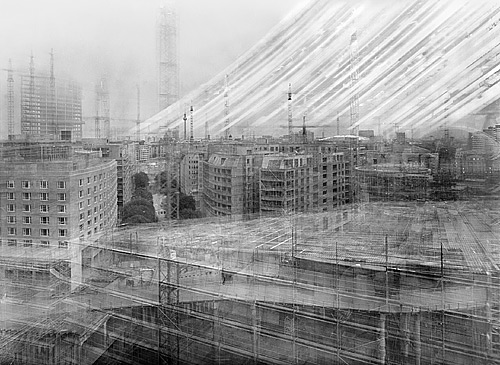Since the early 1990s, the German photographer Michael Wesely has been inventing and refining techniques for using extremely long camera exposures to take compelling photographs. Through the use of filters and a very small aperature (yet one that is standard in a professional camera lens), he is able to diminish the amount of light hitting the negative to the point where he can make the exposure last many thousands of times longer than we expect. Some of his pictures of Berlin’s Potsdamer Platz, for example, in a series completed in 1999, were continuously exposed over a period of twenty-six months. The results of Wesely’s exploration of these extremely long exposure times are as surprising as they are beautiful. In 2001, as The Museum of Modern Art was preparing for its ambitious construction and renovation project, it recognized in Wesely’s work an unequalled opportunity to document that project in an artistically serious way. In August of that year, Wesely set specially designed cameras in longterm installations in and around the Museum, choosing his locations for the views they provided of the construction.
Nearly three years later, the images are only recently complete, and their pentimento-like strata of transparencies and overlays render the construction project’s evolution in time as a dense and delicate network in space. Open Shutter accompanies an exhibition organized by Sarah Hermanson Meister of The Museum of Modern Art. The book shows up to seven different images devoted to the construction of the new Museum of Modern Art. Presenting the evolution of Wesely’s work with the long exposure, it also contains fifteen images from earlier projects, most of them documenting scenes of urban renewal.

